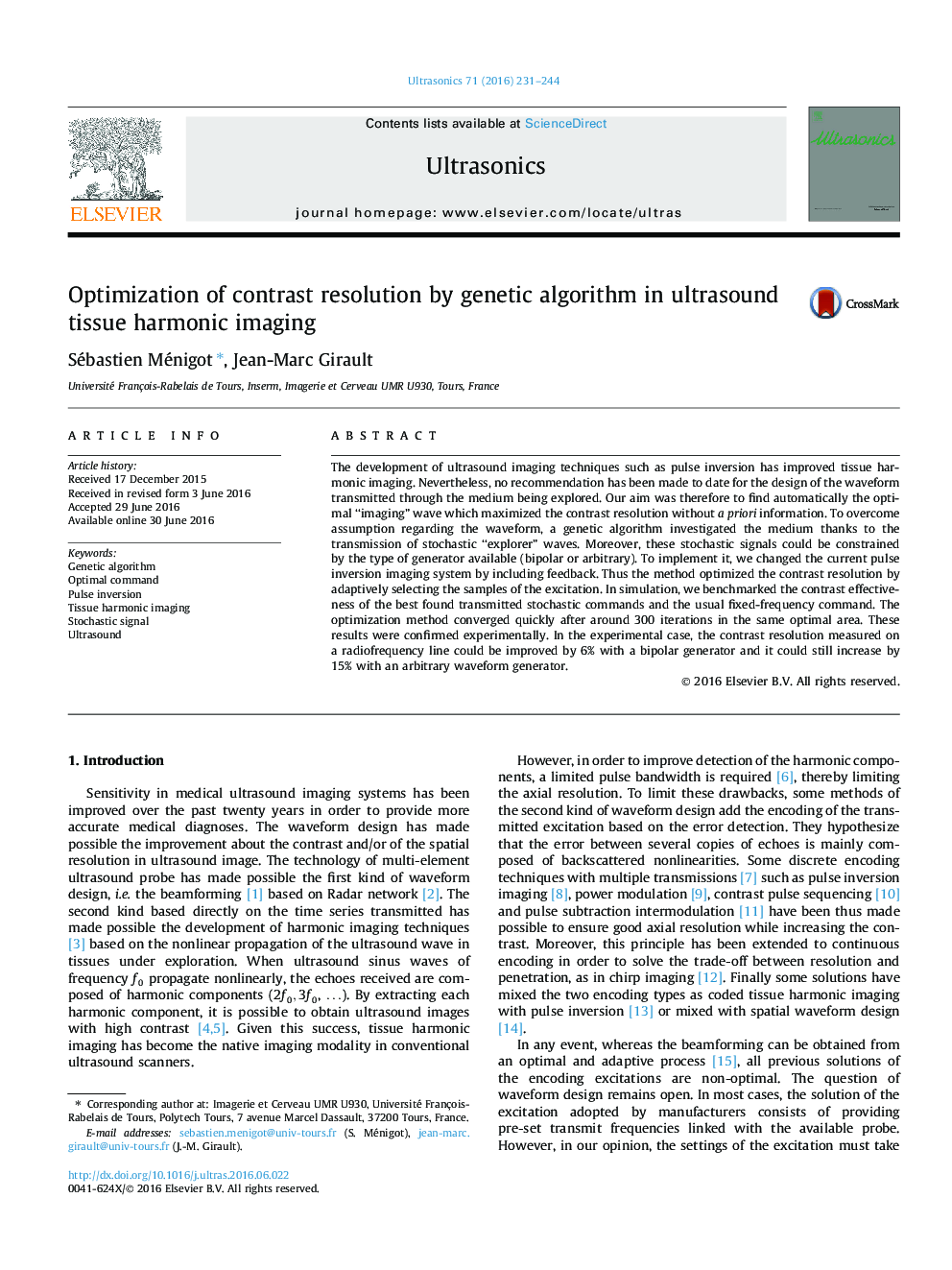| Article ID | Journal | Published Year | Pages | File Type |
|---|---|---|---|---|
| 1758557 | Ultrasonics | 2016 | 14 Pages |
•The contrast resolution is automatically optimized for ultrasound harmonic image.•Random excitations explore the medium and a genetic algorithm selects the best one.•Features of electrical generator can be taking into account (bipolar or arbitrary).•The contrast resolution reached an optimal value higher than with the usual case.•From the benchmark in simulation, the method was applied experimentally.
The development of ultrasound imaging techniques such as pulse inversion has improved tissue harmonic imaging. Nevertheless, no recommendation has been made to date for the design of the waveform transmitted through the medium being explored. Our aim was therefore to find automatically the optimal “imaging” wave which maximized the contrast resolution without a priori information. To overcome assumption regarding the waveform, a genetic algorithm investigated the medium thanks to the transmission of stochastic “explorer” waves. Moreover, these stochastic signals could be constrained by the type of generator available (bipolar or arbitrary). To implement it, we changed the current pulse inversion imaging system by including feedback. Thus the method optimized the contrast resolution by adaptively selecting the samples of the excitation. In simulation, we benchmarked the contrast effectiveness of the best found transmitted stochastic commands and the usual fixed-frequency command. The optimization method converged quickly after around 300 iterations in the same optimal area. These results were confirmed experimentally. In the experimental case, the contrast resolution measured on a radiofrequency line could be improved by 6% with a bipolar generator and it could still increase by 15% with an arbitrary waveform generator.
